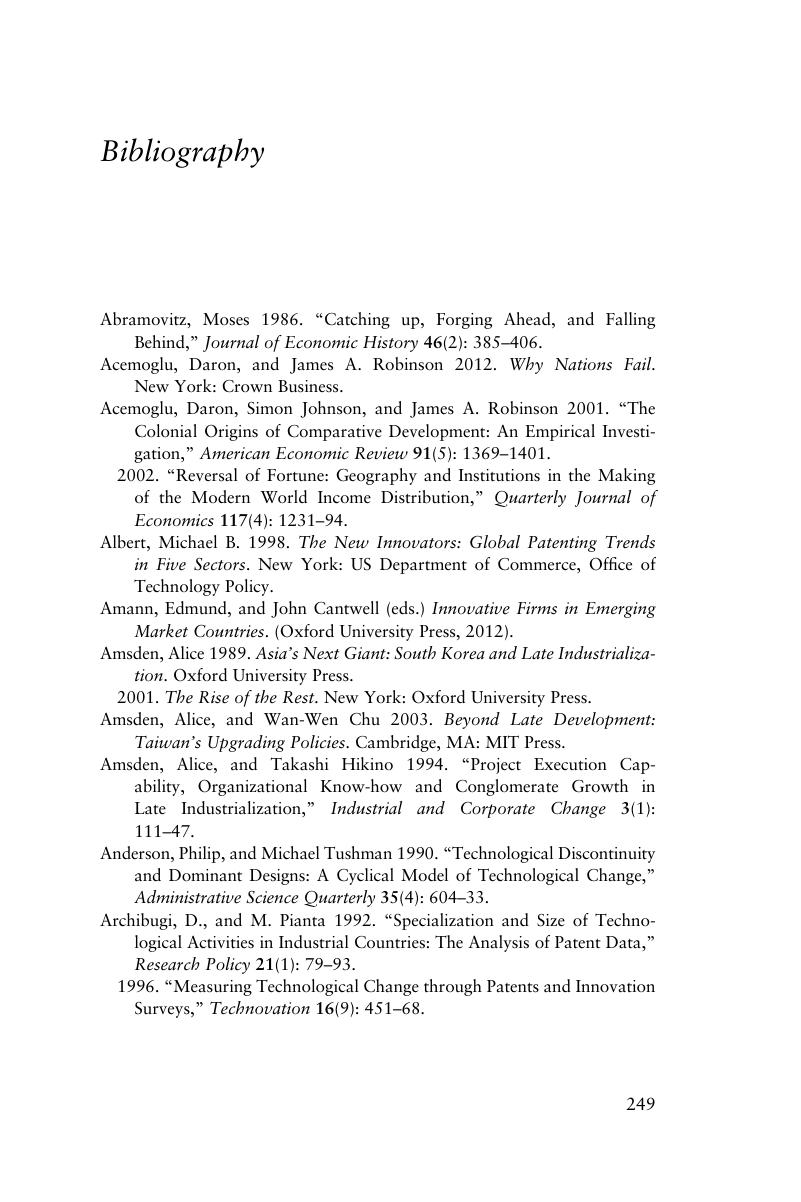Book contents
- Frontmatter
- Contents
- List of Figures
- List of Tables
- Foreword
- Preface
- Part I Introduction and perspectives
- Part II Empirical analysis at three levels
- Part III Toward a theory and how to escape the trap
- Part IV Technological turning points and conclusion
- Appendix tables
- Notes
- Bibliography
- Index
- References
Bibliography
Published online by Cambridge University Press: 05 June 2014
- Frontmatter
- Contents
- List of Figures
- List of Tables
- Foreword
- Preface
- Part I Introduction and perspectives
- Part II Empirical analysis at three levels
- Part III Toward a theory and how to escape the trap
- Part IV Technological turning points and conclusion
- Appendix tables
- Notes
- Bibliography
- Index
- References
Summary

- Type
- Chapter
- Information
- Schumpeterian Analysis of Economic Catch-upKnowledge, Path-Creation, and the Middle-Income Trap, pp. 249 - 264Publisher: Cambridge University PressPrint publication year: 2013



